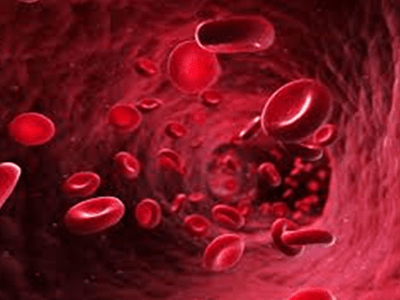This syndrome is associated with emotional disturbances and includes a mixture of miseries, depression, tension and frequently, premenstrual headache. The breasts may become full, tense and painful causing discomfort in wearing routine clothes. This may restrict daily activites and can modify the normal behavioural pattern. In fact, there is no patho- physiological basis for these symptoms.
Symptoms
- Tension or anxiety
- Depressed mood
- Crying spells
- Mood swings and irritability or anger
- Appetite changes and food cravings
- Trouble falling asleep (insomnia)
- Social withdrawal
- Poor concentration
- Change in libido
Physical signs and symptoms
- Joint or muscle pain
- Headache
- Fatigue
- Weight gain related to fluid retention
- Abdominal bloating
- Breast tenderness
- Acne flare-ups
- Constipation or diarrhea
- Alcohol intolerance
For some, the physical pain and emotional stress are severe enough to affect their daily lives. Regardless of symptom severity, the signs and symptoms generally disappear within four days after the start of the menstrual period for most women.
Causes
Exactly what causes premenstrual syndrome is unknown, but several factors may contribute to the condition:
- Cyclic changes in hormones. Signs and symptoms of premenstrual syndrome change with hormonal fluctuations and disappear with pregnancy and menopause.
- Chemical changes in the brain. Fluctuations of serotonin, a brain chemical (neurotransmitter) that's thought to play a crucial role in mood states, could trigger PMS symptoms. Insufficient amounts of serotonin may contribute to premenstrual depression, as well as to fatigue, food cravings and sleep problems.
- Depression. Some women with severe premenstrual syndrome have undiagnosed depression, though depression alone does not cause all of the symptoms
Amenorrhea

Amenorrhea is the absence of menstrual bleeding and may be primary or secondary.
Primary amenorrhea is the absence of menstrual bleeding and secondary sexual characteristics (for example, breast development and pubic hair) in a girl by age 14 years or the absence of menstrual bleeding with normal development of secondary sexual characteristics in a girl by age 16 years.
Secondary amenorrhea
is the absence of menstrual bleeding in a woman who had been menstruating but later stops menstruating for 3 or more months in the absence of pregnancy, lactation (the ability to breastfeed), cycle suppression with systemic hormonal contraceptive (birth control) pills, or menopause.Causes
Amenorrhea can result because of an abnormality in the hypothalamic-pituitary-ovarian axis, anatomical abnormalities of the genital tract, or functional causes like , Excessive weight gain or weight loss ,Malnutrition ,Depression or other psychiatric disorders, Recreational drug abuse ,Cycle suppression with systemic hormonal contraceptive (birth control) pills.
Symptoms
- Increased hair growth in a male pattern (hirsutism) may be caused by excess androgen
- Vaginal dryness, hot flushes, night sweats, or disordered sleep may be a sign of ovarian insufficiency or premature ovarian failure.
- Noticeable weight gain or weight loss may be present.
- Excessive anxiety may be present in women with associated psychiatric abnormalities.
Menorrhagia

Menorrhagia is defined as menstruation at regular cycle intervals but with excessive flow and duration and is one of the most common gynecologic complaints in contemporary gynecology.
Causes
- due to Disorders of Coagulation
- Hormonal Imbalance
- Miscarriage induced Menorrhagia
- Menorrhagia due to IUCD
- Fibroids
- Psychological Upsets and overwork may also lead to menorrhagia
- Marital disharmony, domestic quarrels, undue anxiety, stress and tension are some of the other occasional causes for heavy bleeding.
Metrorrhagia

Bleeding Between Periods; Breakthrough Bleeding; Dysfunctional Uterine Bleeding; Inter menstrual Bleeding; Spotting ; Abnormal uterine bleeding that is not related to MENSTRUATION, usually in females without regular MENSTRUAL CYCLE. The irregular and unpredictable bleeding usually comes from a dysfunctional endometrium.
Causes
- Cervicitis
- Dysfunctional uterine bleeding.
- Endometrial polyps
- Endometriosis .
- Endometritis
- Gynecologic cancer Metrorrhagia is commonly an early sign of cervical or uterine cancer. Later, the patient may experience weight loss, pelvic pain, fatigue and, possibly, an abdominal mass.
- Uterine leiomyomas
DYSMENORRHOEA

pain which is in relation to menses that is troublesome so as to disable a woman from performing her routine chores. Dysmenorrhea can be classified into primary dysmenorrhea where no underlying pathology can be demonstrated and secondary dysmenorrhea which has a definitive underlying causative pathology.
Symptoms
- Throbbing or cramping pain in your lower abdomen that can be intense
- Pain that starts 1 to 3 days before your period, peaks 24 hours after the onset of your period and subsides in 2 to 3 days
- Dull, continuous ache
- Pain that radiates to your lower back and thighsSome women also have:
- Nausea
- Loose stools
- Headache
- Dizziness

